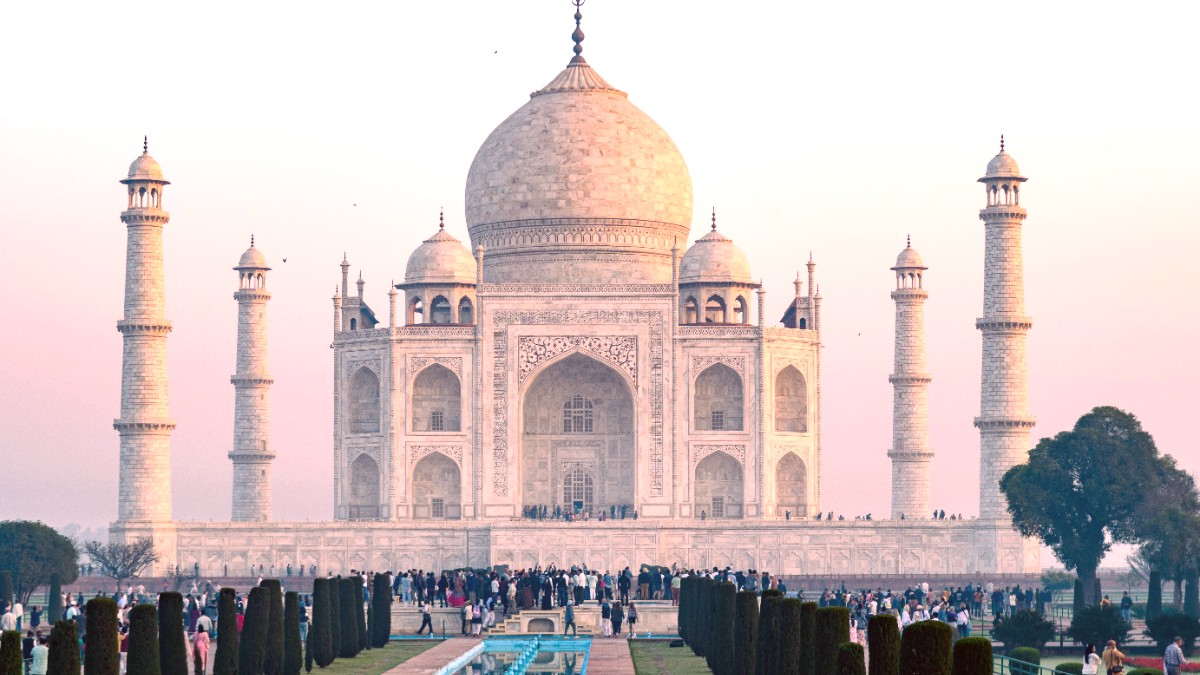
Uttar Pradesh, India
Agra presents distinct seasonal climate patterns, each bringing different advantages and considerations for travelers.
Winter (October to March) presents the most agreeable weather, with cool mornings and comfortable daytime temperatures, and low precipitation. Summer (April to June) brings intense heat, often above 40°C. Monsoon (July to September) introduces high humidity and rainfall.
Different times of the year lend themselves to specific activities for the best experience.
Outdoor exploration, notably for the Taj Mahal and Agra Fort, feels most pleasant from October to March. Photography at sunrise or sunset benefits from softer light across all seasons, with winter offering the clearest skies. General outdoor activities find their best timing during the cooler winter months.
Summer (May-June) can have severe heat.
Drink plenty of fluids; avoid midday sun.
Limit outdoor exposure during hottest hours.
July-August bring heavy rain.
Nature is lush, offering unique photo opportunities.
Localized flooding and delays possible.
Dec-Jan mornings can be misty.
Overall most pleasant temperatures for exploration.
Taj Mahal views may be obscured, flight/train delays possible.
Many nationalities qualify for an Indian e-Visa, streamlining the application. This digital visa serves tourism and short-term medical treatment. Apply online via the official Indian e-Visa Application portal at least four days before travel. The e-Visa appears for 30 days, one year, or five years, permitting multiple entries. For those not eligible, a regular tourist visa from an Indian embassy or consulate before travel is the path.
When you arrive at an Indian airport, biometric data collection (fingerprints and a facial image) marks a standard part of the immigration procedure for foreign nationals. Keep your passport and visa (or e-Visa approval letter) ready for presentation. The process generally proceeds efficiently, though queues may form during peak arrival times. No special permits generally are a condition for standard tourist activities in Agra.
Valid for at least six months beyond departure, with two blank pages.
Recent, passport-sized color photo with white background.
Duly filled and signed (digital for e-Visa, printed for regular).
Proof of confirmed flight for departure from India.
Evidence to cover expenses during your stay.
Travel costs vary considerably based on individual travel preferences.
The official currency of India is the Indian Rupee (INR), symbolized by ₹. Currency exchange centers, major banks, and larger hotels in Agra offer conversion. ATMs are widely available, accepting major international cards.
These daily averages fluctuate based on choices and market conditions.
Entrance fees for major sites are standard for foreign visitors.
Certificate is a condition if arriving from or transiting through a risk country.
Consult a travel health clinic or your doctor 4-6 weeks before your trip.
Hepatitis A and B, Typhoid, Tetanus-Diphtheria-Pertussis (Tdap), MMR.
Tap water is not safe for consumption.
Always use sealed Bottled water for drinking and brushing teeth. Consider a Filtered water bottle or Purification tablets as a backup.
Prioritize hot, freshly cooked food. Be cautious with street stall food; choose vendors with high customer turnover. Avoid uncooked foods, unwashed fruits, and salads.
Maintain excellent hand hygiene; Hand sanitizer is a good companion.
Prevent by avoiding unpurified water and uncooked foods. Carry Anti-diarrhea medication like Imodium.
Dengue risk higher after monsoon. Use DEET/picaridin insect repellent, wear long sleeves.
Stay hydrated. Avoid midday sun, wear Hat and Sunglasses. Take breaks in shade.
Agra appears generally safe for tourists, but petty crime may occur in crowded areas.
Agra features several private hospitals and clinics for general medical needs. For complex emergencies, Delhi offers a broader range of advanced facilities.
One of the prominent private healthcare facilities in Agra.
A major government hospital with a range of services.
Consult your home country's travel health clinic before departure.